Available Plans
You can be confident about the retirement plan you choose here.
Aspire: Solo 401(k), SEP IRA & Simple IRA
Allows participants to setup an individual retirement account.Got a question? Call us at 206-939-5615A Roth IRA is an individual retirement account that offers tax-free growth and tax-free withdrawals in retirement. Roth IRA rules dictate that as long as you've owned...
Aspire Capital Advisors: Roth IRA
Allows participants to defer money into a Roth IRA, and have it grow tax free for retirementGot a question? Call us at 206-939-5615A Roth IRA is an individual retirement account that offers tax-free growth and tax-free withdrawals in retirement. Roth IRA rules dictate...
Aspire Capital Advisors: Traditional IRA
Allows participants to defer money into a Traditional IRA, and have it grow tax deferred for retirement. Contributions may be tax deductible, subject to IRS guidelines.Got a question? Call us at 206-939-5615A Traditional IRA is an individual retirement account that...
Quick Reference: Plan Type Definitions
A Roth IRA (individual retirement account) plan is generally not taxed upon distribution, provided certain conditions are met. The principal difference between Roth IRAs and most other tax-advantaged retirement plans is that rather than granting a tax reduction for contributions to the retirement plan, the growth and qualified withdrawals from a Roth IRA plan are tax-free. Income thresholds apply.
- Contribute after-tax compensation
- Contributions are not tax deductible
- Possible penalty for withdrawals before age 59 ½
- Qualified withdrawals are not taxable
- Certain income restrictions apply
A traditional IRA (individual retirement account) allows individuals to direct pre-tax income toward investments that can grow tax-deferred. The IRS assesses no capital gains or dividend income taxes until the beneficiary makes a withdrawal. Income thresholds may apply. Contributions to a traditional IRA may be tax-deductible depending on the taxpayer’s income, tax-filing status, and other factors.
- Contribute pre-tax compensation
- Contributions are tax deductible
- Possible penalty for withdrawals before age 59 ½
- Withdrawals are taxable
- No income restrictions
A Solo 401(k) – also known as a Self Employed 401(k) or Individual 401(k) – is a traditional 401(k) plan covering a business owner with no employees, or the owner and his/her spouse. These plans have the same rules and requirements as any other 401(k) plan. The business owner wears two hats: employee and employer. Contributions can be made to the plan in both capacities.
- Single business owner, may include spouse
- Contributions can be made as both employer and employee
- Annual filing of form 5500-SF may be required, depending on the value of the assets
A traditional 401(k) plan allows eligible employees to make pre-tax elective deferrals through payroll deduction. In addition, employers have the option of making contributions on behalf of all participants, making matching contributions based on employees’ elective deferrals, or both. Employer contributions are deductible on the employer’s federal income tax return.
- Employer contributions are optional
- Employer contributions are tax deductible
- Highly customizable
- Annual filing of form 5500 required
Automatic enrollment permits the employer to automatically reduce the employee’s wages by a fixed percentage or dollar amount and contribute that amount to the 401(k) plan unless the employee has affirmatively chosen not to have his/her wages reduced or has chosen to have his/her wages reduced by a different percentage. This has been an effective way for many employers to increase participation in their 401(k) plans.
- Employer contributions are optional
- Employer contributions are tax deductible
- Assists with high level of employee participation
- Employees may opt-out
- Annual filing of form 5500 required
A safe harbor 401(k) plan requires employer contributions and those contributions are fully vested when made. The safe harbor 401(k) plan is not subject to the complex annual nondiscrimination tests that apply to traditional 401(k) plans. Allows highly compensated employees to maximize contributions.
- Minimum employer contribution required
- Employer contribution can vary year to year
- Employer contributions are tax deductible
- Allows employees to maximize contributions
- Annual filing of form 5500 required
Profit sharing plans allow contributions from the employer only. Employer contributions are discretionary, meaning the business can decide from year to year how much to contribute—or whether to contribute at all—to an employee’s plan. If the company does not make a profit, it does not have to make contributions to the plan.
- Employer contributions only
- Employer contributions may be flexible/variable
- Employer contributions are tax deductible
- Allows higher contribution limits
- Annual filing of form 5500 required
CONTACT US:
.


The Small Business Retirement Marketplace is administered by the Washington Department of Commerce as established in RCW Chapter 43.330.730-750. Plans carried on the Retirement Marketplace are verified by the Department of Financial Institutions and/or the Office of the Insurance Commissioner to meet the requirements set forth in RCW 43.330.732(7) and 735(6)(a).
Enrollment in plans on the Retirement Marketplace is voluntary. Plan enrollment is managed by private financial services firms. Saving through certain plans will not be appropriate for all individuals. Employer facilitation of most retirement savings plans carries certain legal obligations for which employers are entirely responsible. Contributing to a retirement savings plan may offer tax benefits and/or consequences. Other private sector plans not offered on the Retirement Marketplace may charge lower fees. Consult your tax or financial adviser with questions related to investments.
The trademarks and logos appearing on this page are owned by the respective companies named or depicted herein, and are used here by permission.



